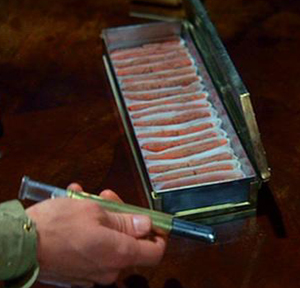
Melange, often referred to as "the spice", is the fictional psychedelic drug central to the Dune series of science fiction novels by Frank Herbert and derivative works.

The Spacing Guild is an organization in Frank Herbert's science fiction Dune universe which possesses a monopoly on interstellar travel and banking. Guild Navigators use the drug melange to achieve limited prescience, allowing them to successfully navigate "folded space" and safely guide enormous starships called heighliners across interstellar space instantaneously.

The Mysterious Cities of Gold, originally released in Japan as Esteban, Child of the Sun and released in France as Les Mystérieuses Cités d'Or, is an animated series which was co-produced by DiC Audiovisuel and Studio Pierrot.

Harsh Realm is an American science fiction television series about humans trapped inside a virtual reality simulation. It was developed by Chris Carter, creator of The X-Files and Millennium, and began airing on the Fox Network on October 8, 1999. The series fared poorly in the ratings and was removed from the schedule after three of its nine episodes had aired. The remaining six episodes premiered on the FX Network. Repeats of the series began airing Fall 2007 on CBC Country Canada.
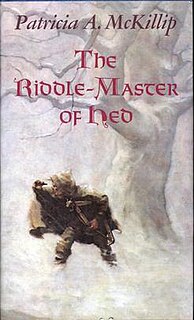
The Riddle-Master of Hed is a fantasy novel by American writer Patricia A. McKillip and the first book of her Riddle Master trilogy. The novel and trilogy utilize themes from Celtic mythology.

The Whispering Statue is the fourteenth volume in the Nancy Drew Mystery Stories series. It was written by Mildred Wirt Benson, whom many readers and scholars consider the "truest" of the numerous Carolyn Keene ghostwriters, following an outline by Harriet Stratemeyer. The book was originally published by Grosset & Dunlap in 1937. An updated, revised, and largely different story was published under the same title in 1970.
The Coldfire Trilogy is a science fiction/fantasy trilogy written by Celia S. Friedman. It includes:

The Auton trilogy is a series of direct-to-video spin-off productions based on the long running BBC science fiction series Doctor Who. The three films in the series are Auton (1997), Auton 2: Sentinel and Auton 3. They were produced by the independent BBV company and are sequels to the Third Doctor stories Spearhead from Space and Terror of the Autons. All three films have been reissued on DVD.

Superman's Metropolis is a DC Comics comic book and a Superman Elseworlds publication. It is the first part of a trilogy based on German Expressionist cinema, succeeded by Batman: Nosferatu and Wonder Woman: The Blue Amazon. It was written by Jean-Marc Lofficier, Randy Lofficier and Roy Thomas and illustrated by Ted McKeever.

The Rats (1974) is a horror novel by British writer James Herbert. This was Herbert's first novel and included graphic depictions of death and mutilation. A film adaptation was made in 1982, called Deadly Eyes. A 1985 adventure game for the Commodore 64 and ZX Spectrum based on the book was published by Hodder & Stoughton Ltd and produced by GXT. The Rats was followed by three sequels, Lair (1979), Domain (1984) and The City (1993). All three books were sold as a trilogy and were very well received by the public and horror fans.

Dragons of Fallen Sun is a fantasy novel by American writers Margaret Weis and Tracy Hickman. It is the first novel published in The War of Souls trilogy and part of the large Dragonlance series.

"The Merchant and the Alchemist's Gate" is a fantasy novelette by American writer Ted Chiang, originally published in 2007 by Subterranean Press and reprinted in the September 2007 issue of Fantasy & Science Fiction. In 2019, the novelette was included in the collection of short stories Exhalation: Stories.
Mobile Suit Gundam: Blue Destiny is a manga written and illustrated by Mizuho Takayama, based on the Mobile Suit Gundam Side Story trilogy of video games.
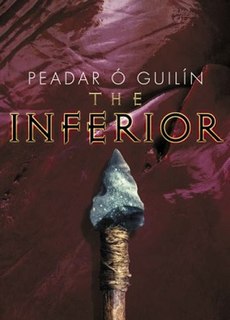
The Inferior is a 2007 novel by Peadar Ó Guilín. It begins as a fantasy novel, then develops characteristics generally attributed to science fiction novels. The book has been marketed as YA fiction.

A Soldier's Prayer is a 1961 Japanese film directed by Masaki Kobayashi. It is the third part of The Human Condition trilogy.
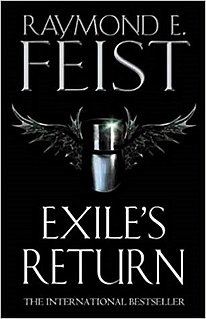
Exile's Return is a fantasy novel by American writer Raymond E. Feist, the third book in the Conclave of Shadows trilogy, part of The Riftwar Cycle. It was preceded by King of Foxes and is followed by Flight of the Nighthawks.
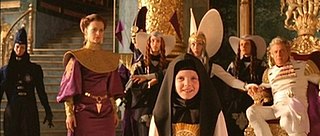
Multiple organizations of the Dune universe dominate the political, religious, and social arena of the setting of Frank Herbert's Dune series of science fiction novels, and derivative works. Set tens of thousands of years in the future, the saga chronicles a civilization which has banned computers but has also developed advanced technology and mental and physical abilities through physical training, eugenics and the use of the drug melange. Specialized groups of individuals have aligned themselves in organizations focusing on specific abilities, technology and goals. Herbert's concepts of human evolution and technology have been analyzed and deconstructed in at least one book, The Science of Dune (2008). His originating 1965 novel Dune is popularly considered one of the greatest science fiction novels of all time, and is frequently cited as the best-selling science fiction novel in history. Dune and its five sequels by Herbert explore the complex and multilayered interactions of politics, religion, ecology and technology, among other themes.
We've a three-point civilization: the Imperial Household balanced against the Federated Great Houses of the Landsraad, and between them, the Guild with its damnable monopoly on interstellar transport.

The Dune prequel series is a sequence of novel trilogies written by Brian Herbert and Kevin J. Anderson. Set in the Dune universe created by Frank Herbert, the novels take place in various time periods before and in between Herbert's original six novels, which began with 1965's Dune. In 1997, Bantam Books made a $3 million deal with the authors for three Dune prequel novels, partially based upon notes left behind by Frank Herbert, that would come to be known as the Prelude to Dune trilogy. Starting with 1999's Dune: House Atreides, the duo have published 13 Dune prequel novels to date. In 2011 Publishers Weekly called the series "a sprawling edifice that Frank Herbert’s son and Anderson have built on the foundation of the original Dune novels." Jon Michaud of The New Yorker wrote in 2013, "The conversion of Dune into a franchise, while pleasing readers and earning royalties for the Herbert estate, has gone a long way toward obscuring the power of the original novel."

Navigators of Dune is a 2016 science fiction novel by Brian Herbert and Kevin J. Anderson, set in the Dune universe created by Frank Herbert. It is the third book in their Great Schools of Dune prequel trilogy, which itself is a sequel to their Legends of Dune trilogy.

Rick Riordan Presents is a book imprint of Disney-Hyperion that was launched in 2018 and is led by Stephanie Owens Lurie. The line publishes books that utilize the mythology of various cultures and countries in its storytelling akin to Rick Riordan's Percy Jackson & the Olympians. The first book published under the imprint, Aru Shah and the End of Time, was released on March 23, 2018.